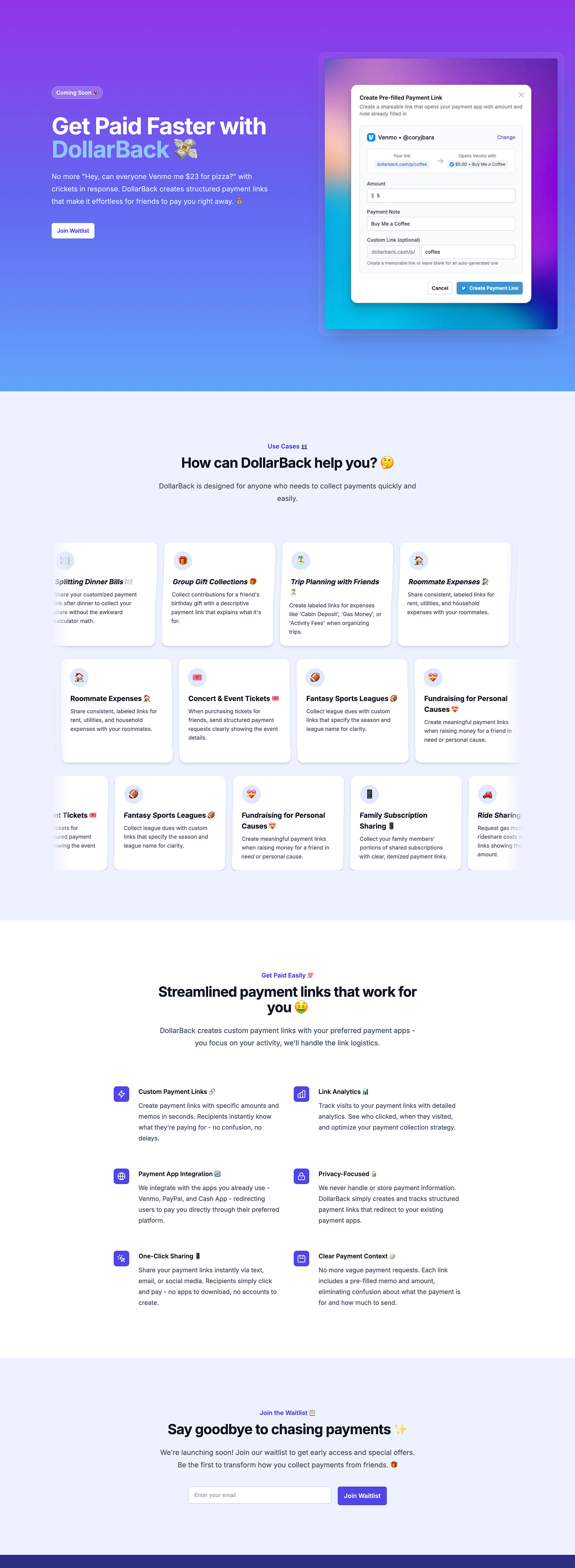The $100 Ideas
Solving problems, learning, and having fun: aren't these the metrics for success?
Everyone likes to talk about million-dollar ideas. These days, I’m more interested in the hundred-dollar ideas.
Ideas that will never and should never raise VC funding. Ideas that do not have a broad market appeal and won’t attract a million users. Not a platform that boasts the ability to “change how we work,” but a product that fixes a single broken workflow. Ideas that solve a real problem for a niche group of users.
I’ve been having a lot of fun recently not building the next million-dollar startup, but rather building several hundred-dollar products.
People say not to go after the B2C market. But I am a C. And I can solve my own problems much easier than I can solve others’ without extensive market research. By being the first user and target customer, I can build for me, and then learn how I can adapt to others’ use cases. At the very least, I will have a market of one.
I think we will see a number of these micro-SaaS apps being spun up soon by people who have a good product sense and a desire to build cool things. The audience no longer has to be in the millions of people, or thousands of enterprise contracts. With the ease of development these days, the niches will keep getting smaller.
I bought a new domain name this week, which has seemingly become a monthly occurrence for me.
Why? Because I found a problem that I keep running into over and over again. It’s not a daily problem, or even a weekly problem. It’s a problem I have a few times a year. But every time, I kept wishing someone had already built a solution.
I wanted a way to share a link with others with a pre-filled Venmo amount, so I wouldn’t have to awkwardly text a few groups “Can everyone send me $15 for wings?”. Fortunately I built Split It to help split larger restaurant bills. But for the one-off stuff like splitting a Costco bill for party snacks, paying for a group gift, or collecting “donations” for our annual College Football Bowl Pool, there was no good way besides sending a text and putting the onus on the micro-debtors.
So I bought DollarBack.cash to fix this problem: a simple solution to build pre-filled P2P payment links that make it easy to get paid back.
Will people pay for this app? It’s unclear to me at this point. I don’t imagine I will make much money from it, but I will certainly use it, and I imagine others will as well. It can be a product that I can see having power users, now it’s just a matter of finding them and making sure the app solves their problems.
I used to let people’s opinions like “that’s a dumb idea” get to me, and prevent me from building something cool. But now, why not build? These problems are not only relevant, but fun to solve in a creative way. I love building tech products, and it’s fun to spin up apps for everyday use cases.
My new checklist for a successful project is as follows:
Does it solve a problem for me or someone else?
Did I learn something while building it?
Did I have fun building it?
If the answer to each of these questions is yes, then I would consider the project a success, regardless of the outcome.
Below is the new DollarBack landing page with a live look at one of the actual screens I built. It’s a product of about 20 minutes of vibe coding with Cursor and the new Claude Sonnet 3.7. While the app is not ready to launch, I made a lot of progress on it, and I am pretty proud of the functionality so far. I don’t think it will be widely used, but what’s the harm in putting it out there?
Why am I telling you all of this? I guess to tell my story, to build in public, and hopefully to inspire the next generation of creators and app developers. Even if you’ve never written a line of code before, I would encourage you to try out some of the AI-development tools out there. They take a prompt for a small idea and spin up an app for you. Some of the easy ones to get started are:
Don’t worry about which one you choose, they all enable you to go from idea to launching something on the internet in just a few minutes. Sure, it won’t be perfect, but it is cool to see your idea unfold in front of your eyes.
With these tools, the only limit is your imagination.
I hope my journey inspires you to build or create something, especially if you don’t know what the end result will be. The only question you have to answer is: what problem will you solve?
Until next Tuesday,
-Cory


